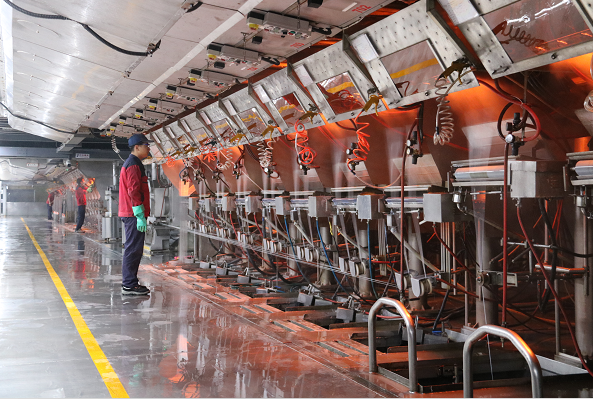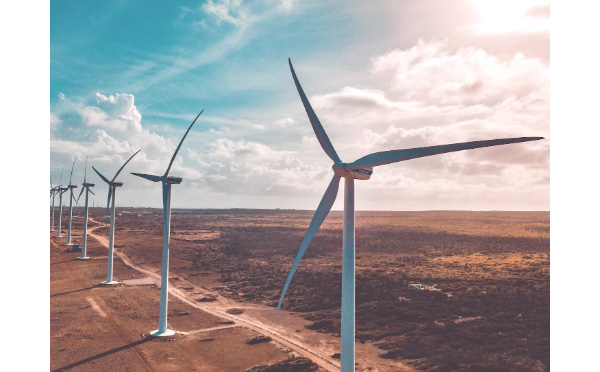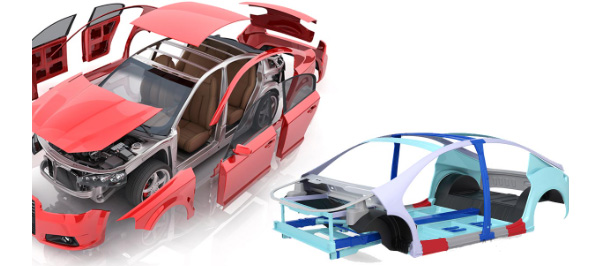Fiberglass is an excellent performance of inorganic non-metallic materials, a wide range of advantages are good insulation, heat resistance, good corrosion resistance, high mechanical strength, the disadvantage is the nature of the brittle, poor abrasion resistance, fiberglass are commonly used as a reinforcing material for composite materials, electrical insulation insulation materials, substrates and other areas of the national economy.
Fiberglass is based on chlorite, quartz sand, limestone, dolomite, borax, borosilicate as raw materials, high-temperature melting, drawing, winding, weaving and become a monofilament with a diameter of a few microns to more than 20 microns, equivalent to 1/20-1/5 of the hair strands, and each bundle of fibers consists of hundreds or even thousands of monofilaments. According to the fiberglass shape, length can be divided into continuous fiber, fixed length fiber and glass wool; according to the glass composition can be divided into non-alkali, chemical resistance, high alkali, medium alkali, high strength, high modulus of elasticity and alkali (alkali) fiberglass.
Widely used in building materials, wind power and other fields
At present, the world fiberglass industry has formed a complete industrial chain from fiberglass, fiberglass products to fiberglass composites, involving traditional industrial fields such as automobile manufacturing and aerospace, wind power generation, filtration and dust removal, environmental engineering, marine engineering and other emerging fields.
1, Building materials
In the downstream demand for fiberglass, the demand for fiberglass in the field of building materials is the largest. Fiberglass in the building materials industry is mainly used in GRC boards, insulation boards, fire prevention boards, sound-absorbing materials, load-bearing components, roof waterproofing, membrane structures, etc., which involves building load-bearing, reinforcement, decoration, waterproofing, thermal insulation, sound insulation, fire prevention and other scenes.
Based on the good performance of thermal insulation, heat insulation, pressure resistance, sound insulation, etc., fiberglass can effectively improve the performance of green buildings, reduce building energy consumption, and strongly promote the green and low-carbon development of the building materials industry.
2, Wind power field
With the gradual decline of wind abandonment rate in all provinces, in order to reduce carbon emissions, to achieve carbon peak, carbon neutral medium and long-term goals, wind power, photovoltaic gradually replace thermal power is a long-term trend, will provide impetus for the growth of glass fiber demand.
3, Integrated circuit field
Electronic yarn is a high-end glass fiber yarn products, monofilament diameter of no more than 9 microns, mainly used for weaving electronic cloth, as a copper-cladding board, printed circuit boards as the basic materials; electronic yarn, electronic cloth, copper-clad boards, printed circuit boards constitute the electronic circuit industry chain is closely linked to the upstream and downstream of the basic materials industry.
4, New energy automobile field
According to the data of China Fiber Composites Network, the transportation field accounts for about 14% of China’s fiberglass consumption, which is an important application scenario of fiberglass. Fiberglass has excellent performance and obvious advantages over traditional materials. The automotive industry mainly uses the material for coverings and stressed parts, such as roofs, window frames, bumpers, fenders, body panels and instrument panels. In the railroad transportation industry, it is mainly used for inner and outer panels of carriages, roofs, seats and SMC window frames.
Post time: Jul-08-2024








